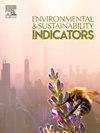Vegetation cover survey methods at cross-roads: Choice of aerial photography or satellite imagery by Japanese municipalities
IF 5.4
Q1 ENVIRONMENTAL SCIENCES
引用次数: 0
Abstract
In Master Plan for Parks and Open Spaces (or Midori-no-Kihonkeikaku), municipalities delineate their future visions, goals, and strategies for the conservation and promotion of green areas. Regular surveys are typically conducted, especially in densely populated urban areas, to assess and monitor these green areas. However, the data collection approaches are not standardized and left to the discretion of each municipality, considering factors such as cost, effort, desired accuracy, and comparability with historical data. Consequently, the data published by various municipalities lack uniformity, complicating comparisons and a comprehensive understanding of the situation. Furthermore, the rapid advancement in image analysis technology has placed municipal survey methods in a transitional phase. This study targeted 20 special status cities, called “ordinance designated cities” in Japan, to ascertain the current state of vegetation cover surveys method in each city. Interviews were conducted with ordinance designated city from 30th May to 2nd June. As of 2024, eight ordinance designated cities utilized aerial photography and nine used satellite imagery to measure vegetation cover, indicating a nearly equal distribution. Additionally, three cities did not measure vegetation cover. Most cities had not altered their survey methods, but those that did primarily cited cost as the driving factor, with many transitioning from aerial photography to satellite imagery. This shift raised concerns about the consistency of past and future data, underscoring the need to develop methods for integrating data with varying resolutions and coverage areas.
在《公园和开放空间总体规划》(或 Midori-no-Kihonkeikaku)中,市政当局描绘了保护和促进绿地的未来愿景、目标和战略。通常会进行定期调查,特别是在人口稠密的城市地区,以评估和监测这些绿地。然而,数据收集方法并没有统一标准,而是由各城市自行决定,考虑的因素包括成本、工作量、期望的准确性以及与历史数据的可比性。因此,各市公布的数据缺乏统一性,使得比较和全面了解情况变得复杂。此外,图像分析技术的快速发展也使城市调查方法处于过渡阶段。本研究以 20 个具有特殊地位的城市(在日本被称为 "法令指定城市")为对象,以确定各城市植被调查方法的现状。从 5 月 30 日到 6 月 2 日,对条例指定城市进行了访谈。截至 2024 年,有 8 个法令指定城市使用航空摄影测量植被覆盖度,9 个城市使用卫星图像测量植被覆盖度,这表明各城市的植被覆盖度分布基本均衡。此外,有三个城市没有测量植被覆盖度。大多数城市没有改变其调查方法,但那些改变的城市主要将成本作为驱动因素,许多城市从航空摄影过渡到卫星图像。这种转变引起了人们对过去和未来数据一致性的担忧,突出表明有必要制定方法来整合不同分辨率和覆盖范围的数据。
本文章由计算机程序翻译,如有差异,请以英文原文为准。
求助全文
约1分钟内获得全文
求助全文
来源期刊

Environmental and Sustainability Indicators
Environmental Science-Environmental Science (miscellaneous)
CiteScore
7.80
自引率
2.30%
发文量
49
审稿时长
57 days
 求助内容:
求助内容: 应助结果提醒方式:
应助结果提醒方式:


